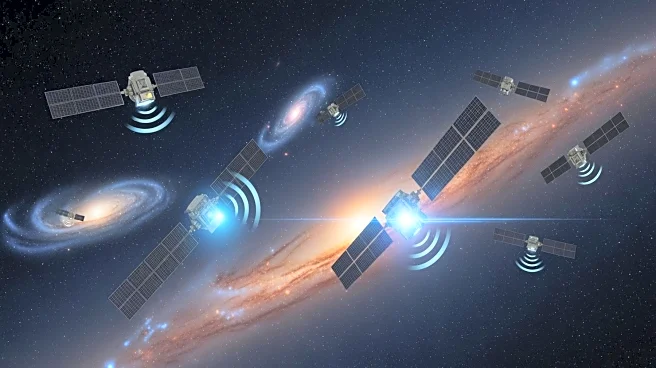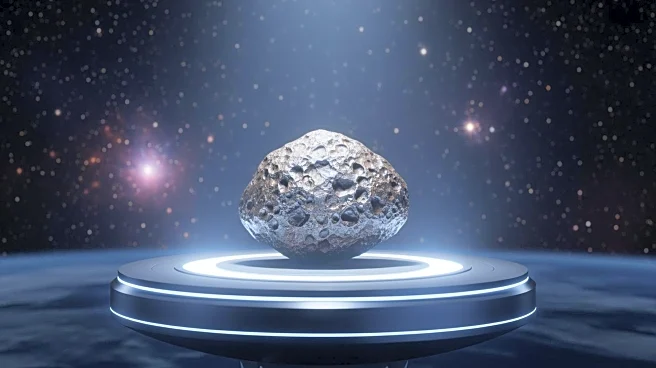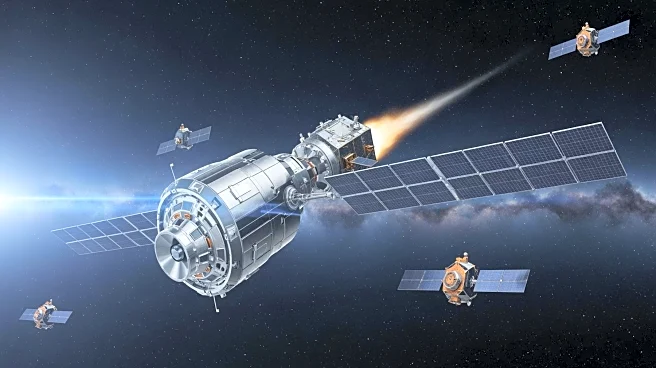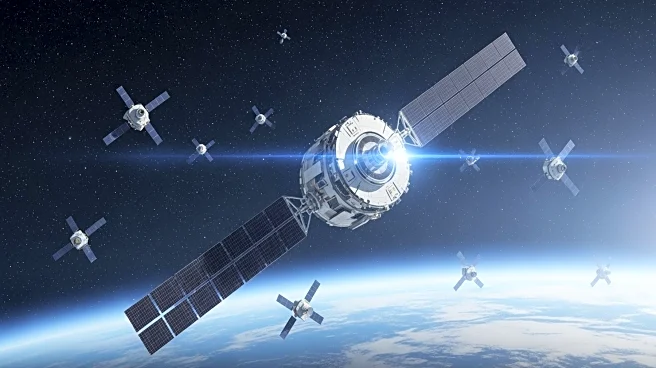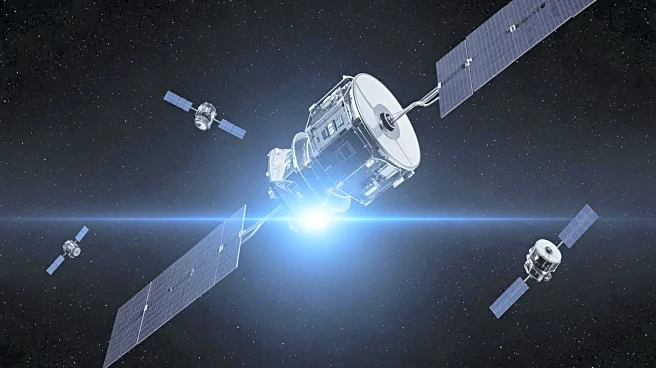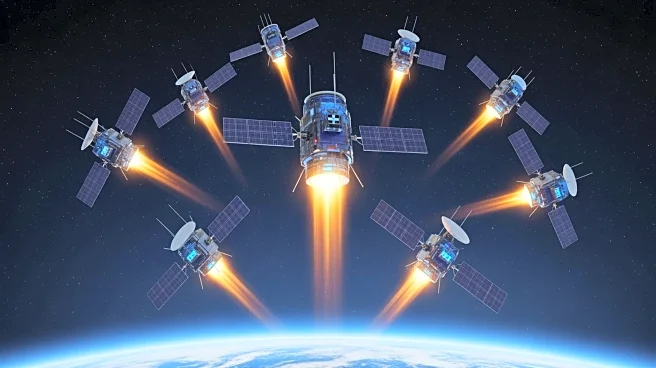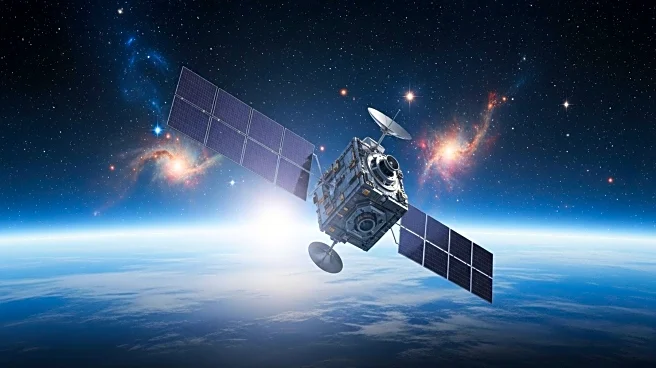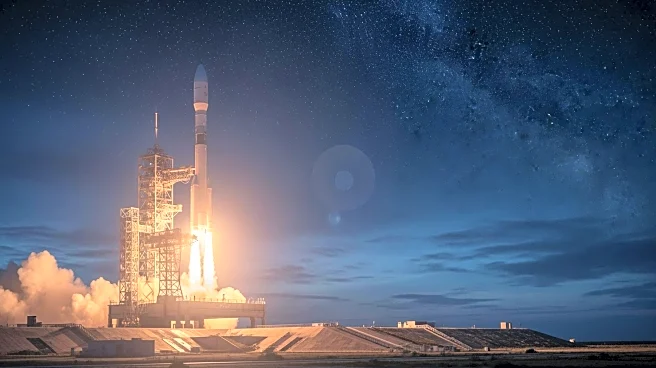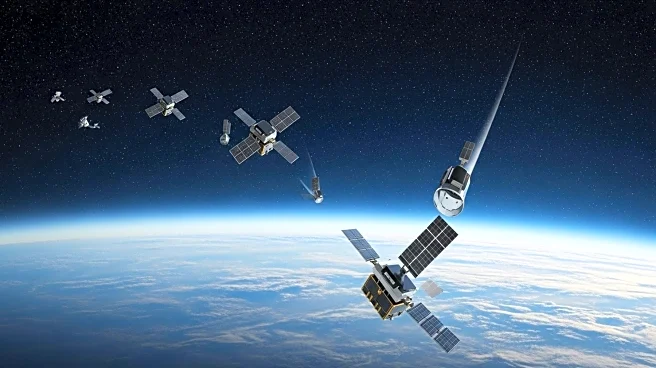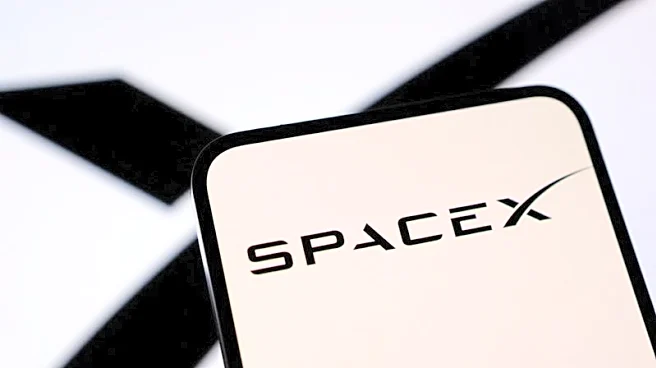What's Happening?
A network of classified SpaceX satellites, known as Starshield, is reportedly emitting a mysterious signal that may contravene international radio frequency standards. The signal was first detected by
Scott Tilley, an amateur satellite tracker in Canada, who noticed transmissions on frequencies typically reserved for uplinking data from Earth to satellites. This unusual activity could potentially interfere with other scientific and commercial satellites, as these frequencies are not meant for downlinking data. The Starshield satellites, which are a classified version of SpaceX's Starlink satellites, are operated by the U.S. National Reconnaissance Office. Despite the potential for interference, SpaceX and the National Reconnaissance Office have not commented on the issue.
Why It's Important?
The emission of signals from the Starshield satellites on frequencies reserved for uplinking data poses a risk of radio interference, which could disrupt the operations of other satellites. This situation highlights the challenges of managing radio spectrum usage in space, especially as the number of satellites increases. The potential interference could affect scientific research and commercial satellite operations, leading to broader implications for industries reliant on satellite data. The lack of response from SpaceX and the National Reconnaissance Office raises questions about regulatory oversight and the balance between national security interests and international standards.
What's Next?
The discovery of these signals may prompt further investigation by international regulatory bodies and satellite operators to assess the extent of the interference and its impact. There could be calls for SpaceX to address the issue and ensure compliance with international standards. Additionally, this situation may lead to discussions on improving coordination and regulation of satellite operations to prevent similar occurrences in the future.
Beyond the Headlines
The use of frequencies typically reserved for uplinking data by the Starshield satellites could be a strategic move to conceal their operations, as suggested by Tilley. This raises ethical questions about transparency and accountability in the deployment of classified satellite networks. The situation also underscores the need for clear guidelines and cooperation among nations to manage the increasingly crowded space environment.
